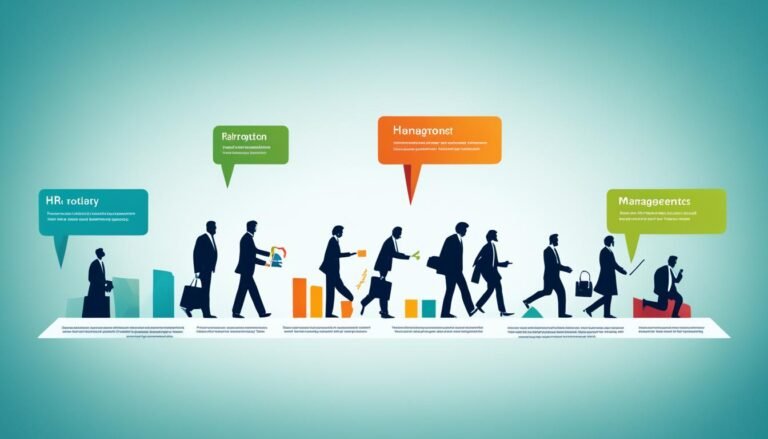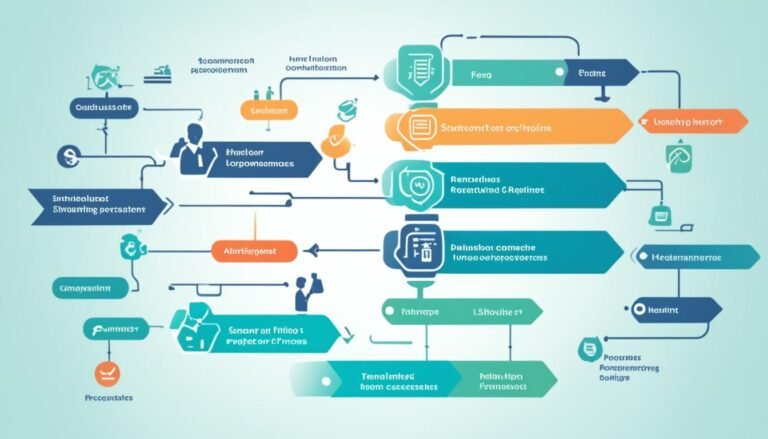A Guide to HR Employee Relations Management
In today’s fast-paced and ever-changing business environment, effective HR Employee Relations Management is crucial for the success of any organization. With human resources being the heart of every company, fostering positive employee relations is essential for creating a harmonious, productive, and inclusive work environment.
Employee relations is a vital component of HR management, focusing on the interactions and relationships between employers and employees. It involves establishing clear policies, facilitating open communication channels, and ensuring fair treatment of all individuals within the organization.
This guide will delve into the intricacies of HR Employee Relations Management, exploring its significance, key principles, best practices, and the role of both management and HR departments in fostering positive employee relations. By implementing these strategies, businesses can enhance employee engagement, boost productivity, and cultivate a thriving work culture.
One crucial aspect of HR management is maintaining positive **employee relations** while ensuring efficient workflow and productivity in the workplace. Incorporating an effective “labor management” solution, such as those designed to enhance team efficiency, can significantly improve how employees are engaged and managed. Effective labor management strategies enable organizations to streamline schedules, optimize resource allocation, and balance workloads to maximize productivity without compromising on employee satisfaction. These solutions are indispensable for fostering a thriving workplace culture conducive to productivity growth.
Key Takeaways:
- Effective HR Employee Relations Management is crucial for the success of a business.
- Positive employee relations foster a harmonious and inclusive work environment.
- Open communication, fair treatment, and opportunities for growth are key elements of employee relations.
- Management plays a critical role in creating a positive work culture and resolving conflicts.
- The HR department is responsible for managing employee relations and ensuring fair treatment.
What is Employee Relations?
Employee relations refers to the interactions and relationships between employers and employees within an organization. It encompasses a wide range of activities, policies, and practices that impact the work environment and the relationship between employers and employees.
Employee relations involve various HR functions, including:
- Employee Communication: Ensuring effective communication channels are in place to facilitate information sharing and employee feedback.
- Performance Management: Implementing performance evaluation processes to assess employee performance and provide feedback for improvement.
- Grievance Handling: Addressing employee concerns, complaints, and disputes in a fair and timely manner.
- Employee Development: Providing opportunities for skill development, training, and career growth to enhance employee capabilities.
- Workplace Health and Safety: Maintaining a safe and healthy work environment by adhering to relevant regulations and implementing safety measures.
- Employee Benefits: Offering comprehensive benefits packages to attract and retain talented employees.
By focusing on employee relations, organizations can create a positive work culture, foster productive relationships, and ultimately enhance employee satisfaction and retention.
Why are Employee Relations Important?
Employee relations play a vital role in the success of any organization. Positive employee relations contribute to several key factors that impact the overall functioning and reputation of a company. Let’s explore why employee relations are crucial:
Employee Engagement
Positive employee relations foster higher levels of employee engagement. When employees feel valued, respected, and supported by their organization, they are more likely to be engaged in their work. Engaged employees are committed to their roles, go the extra mile, and actively contribute to the success of the company. This ultimately leads to increased productivity and overall business growth.
Job Satisfaction
Strong employee relations positively impact job satisfaction levels among employees. When employees have a positive relationship with their employers and colleagues, they experience greater job satisfaction. Job satisfaction is vital as it promotes long-term retention, reduces turnover rates, and enhances the overall well-being of employees.
Productivity
Productivity is directly influenced by employee relations. When employees are satisfied, motivated, and engaged, they are more likely to perform at their best. Positive employee relations create a supportive work environment, encourage collaboration, and stimulate innovative thinking. As a result, employees feel motivated to exceed expectations, leading to increased productivity and achievement of organizational goals.
Legal Compliance
Employee relations are closely linked to legal compliance. Employers must adhere to employment laws and regulations to avoid legal risks and maintain a positive work environment. By fostering strong employee relations, organizations can ensure fair treatment, prevent discrimination, and address workplace issues in a legally compliant manner.
Employer Brand
Strong employee relations contribute to a positive employer brand and reputation. When employees have positive experiences and a favorable relationship with their employers, they become brand advocates. This enhances the employer’s reputation, making it an attractive place for top talent to work. A positive employer brand helps attract and retain high-performing employees, further driving the success of the organization.
By prioritizing employee engagement, job satisfaction, productivity, legal compliance, and employer brand, organizations can reap the numerous benefits that come with fostering positive employee relations.
| Benefits of Positive Employee Relations |
|---|
| Increased employee engagement |
| Enhanced job satisfaction |
| Higher productivity levels |
| Reduced legal risks |
| Attractive employer brand |
Principles of Effective Employee Relations Management
Effective employee relations management is vital for fostering a harmonious and productive work environment. By adhering to certain key principles, organizations can build strong relationships between employers and employees, ensuring mutual respect and satisfaction. These principles include:
- Open Communication: Maintaining transparent and effective communication channels between employers and employees is crucial. Clear and consistent communication fosters understanding, trust, and collaboration, enabling a positive work environment.
- Fairness: Treating all employees with fairness and consistency is essential for building trust and loyalty. Fairness in policies, practices, and decision-making processes ensures that employees feel valued and respected.
- Respect and Dignity: Promoting a culture of respect and dignity creates a positive and inclusive workplace. Recognizing and appreciating employees’ contributions and individuality fosters a sense of belonging and boosts morale.
- Employee Involvement: Involving employees in decision-making processes not only enhances their engagement and motivation but also leads to better outcomes. When employees have a voice, they feel valued and are more committed to their work and the organization.
- Conflict Resolution: Addressing conflicts in a fair and objective manner is crucial for maintaining healthy employee relations. Promptly addressing concerns and resolving conflicts with neutrality and empathy fosters trust and enables a harmonious work environment.
By upholding these principles, organizations can create a positive workplace culture that values effective communication, fairness, consistency, respect, employee involvement, and conflict resolution. Prioritizing employee relations management leads to increased employee engagement, job satisfaction, and overall organizational success.
Best Practices for Positive Employee Relations
To promote positive employee relations, organizations can implement the following best practices:
- Establish Clear Policies and Procedures: A comprehensive set of clear policies and procedures ensures that employees understand their rights, responsibilities, and expectations in the workplace. This fosters transparency and consistency.
- Provide Ongoing Training and Development Opportunities: Ongoing training and development programs help employees acquire new skills, enhance their performance, and stay motivated. This investment in their growth demonstrates the organization’s commitment to their success.
- Foster a Culture of Open Communication: Encourage employees to voice their opinions, concerns, and suggestions through open channels of communication. This cultivates a sense of trust, engagement, and collaboration.
- Recognize and Reward Employee Contributions: Regularly acknowledge and appreciate employees for their hard work, achievements, and contributions. This recognition reinforces their value to the organization and boosts morale.
- Provide Regular Feedback and Coaching: Offer constructive feedback and coaching to help employees improve their performance and reach their full potential. This supports their professional growth and development.
- Address Conflicts and Concerns Promptly: Create a conflict resolution process that allows employees to express their concerns and ensures timely and fair resolution. This avoids escalation and fosters a harmonious work environment.
A commitment to these best practices fosters positive employee relations by promoting clear policies, ongoing training, open communication, recognition, feedback, and conflict resolution.
The Role of Management in Employee Relations
Effective employee relations management is essential for creating a positive work environment and fostering strong relationships between employers and employees. Management plays a critical role in shaping employee relations, and their actions directly impact the overall dynamics within an organization. Let’s explore the key responsibilities and contributions of management in employee relations.
Creating a Positive Work Environment
Management is responsible for cultivating a positive work environment that promotes collaboration, respect, and inclusivity. By establishing a culture of trust and transparency, management sets the tone for healthy employee relations.
Promoting Open Communication
Open and transparent communication is vital for effective employee relations. Management should encourage open dialogue, actively listen to employee feedback, and address any concerns or issues promptly. By fostering communication channels, management facilitates an environment where employees feel heard, valued, and supported.
Providing Training and Development Opportunities
Management plays a crucial role in the professional growth and development of employees. By offering training programs, mentoring opportunities, and career advancement paths, management demonstrates their commitment to employee success. These initiatives not only enhance employee skills but also contribute to employee engagement and job satisfaction.
Addressing Conflicts and Concerns
Conflict resolution is a key responsibility of management in employee relations. Managers should proactively identify and address conflicts, promoting fair and objective resolutions. By actively managing conflicts, management helps maintain a harmonious work environment and prevents issues from escalating.
Effective management of employee relations can lead to increased employee engagement, job satisfaction, and productivity.
In summary, management plays a crucial role in employee relations by creating a positive work environment, promoting open communication, providing opportunities for growth, and addressing conflicts and concerns. By investing in effective management practices, organizations can foster strong employee relations and achieve optimal employee engagement, satisfaction, and productivity.
The Role of HR in Employee Relations
When it comes to managing employee relations, the HR department plays a crucial role in creating a harmonious and productive work environment. They are responsible for overseeing various aspects of employee relations and ensuring the fair treatment of all employees.
Within the HR department, there may be a dedicated employee relations manager or team that focuses specifically on handling employee relations tasks and addressing any related issues that may arise within the organization. This specialized team works closely with employees and management to promote effective communication, resolve conflicts, and maintain a positive work environment.
Employee Handbook: A Guiding Document for Employee Relations
One of the essential tools for HR professionals involved in employee relations is the employee handbook. This comprehensive document serves as a guide to clarify workplace policies, procedures, and expectations for employees. It outlines the rights and responsibilities of both employees and the organization, ensuring that everyone is aware of the rules and regulations.
An employee handbook typically covers various topics, including code of conduct, anti-discrimination policies, performance management, and conflict resolution procedures. It serves as a valuable resource for employees to refer to in case of any questions or concerns regarding their rights and responsibilities.
Here is an example of how an employee handbook can be structured:
| Section | Content |
|---|---|
| Introduction | Welcome message from the company and overview of the handbook |
| Company Culture | Description of the company’s values, mission, and vision |
| Employment Policies | Information about recruitment, hiring, and onboarding processes |
| Workplace Expectations | Explanation of dress code, attendance, and professional conduct |
| Employee Benefits | Details about health insurance, retirement plans, and other perks |
| Performance Management | Guidelines for setting goals, performance evaluations, and career development |
| Conflict Resolution | Steps to resolve conflicts and guidelines for reporting issues |
| Termination Procedures | Information about resignation, termination, and exit interviews |
By providing employees with this comprehensive resource, the HR department ensures that everyone is on the same page and understands the expectations set by the organization. This contributes to a positive work environment and helps prevent misunderstandings or conflicts.
Conflict Resolution: Mitigating Employee Relations Challenges
Conflict is an inevitable part of any workplace, but it’s the HR department’s responsibility to address and resolve these issues promptly and effectively. Conflict resolution is a critical aspect of employee relations management.
HR professionals are equipped with the skills and knowledge to handle conflicts impartially and facilitate open communication between employees. They act as mediators, listening to all parties involved, and working towards finding a fair and satisfactory resolution.
Effective conflict resolution strategies include:
- Encouraging open dialogue and active listening
- Providing a safe, confidential space for employees to express their concerns
- Identifying common ground and shared interests
- Exploring alternative solutions and compromises
- Implementing measures to prevent similar conflicts in the future
Through these efforts, the HR department contributes to creating a positive and collaborative work environment that prioritizes the well-being and satisfaction of employees.
Overall, the HR department plays a vital role in managing employee relations within an organization. From creating the employee handbook to facilitating conflict resolution, HR professionals ensure fair treatment, effective communication, and a positive work environment that fosters strong relationships between employees and management.
Examples of Employee Relations Issues
Employee relations management involves handling various workplace issues. Here are some common challenges that organizations may face:
- Onboarding: Ensuring a smooth transition for new hires to integrate into the company culture.
- Workplace Conflict: Resolving conflicts and disputes between employees or between employees and management.
- Absenteeism: Addressing excessive or unauthorized absences from work.
- Insubordination: Dealing with instances where employees refuse to follow instructions or disrespect authority.
- Misconduct: Managing acts of unacceptable behavior or policy violations.
- Employee Wellbeing: Promoting a healthy work-life balance and supporting employee physical and mental health.
- Workplace Safety: Ensuring a safe working environment and implementing measures to prevent accidents or hazards.
- Labor Relations: Managing interactions with labor unions and ensuring compliance with labor laws.
Effectively addressing these employee relations issues requires proactive measures, clear policies, effective communication, and fair and consistent enforcement. By addressing these challenges, organizations can cultivate a positive workplace culture and maintain harmonious employee relations.
| Issue | Description |
|---|---|
| Onboarding | Ensuring smooth integration of new hires into the company. |
| Workplace Conflict | Resolving conflicts between employees or between employees and management. |
| Absenteeism | Addressing excessive or unauthorized absences from work. |
| Insubordination | Dealing with employees who refuse to follow instructions or disrespect authority. |
| Misconduct | Managing acts of unacceptable behavior or policy violations. |
| Employee Wellbeing | Promoting a healthy work-life balance and supporting employee physical and mental health. |
| Workplace Safety | Ensuring a safe working environment and preventing accidents or hazards. |
| Labor Relations | Managing interactions with labor unions and complying with labor laws. |
The Benefits of Positive Employee Relations
Positive employee relations offer a multitude of advantages for organizations. By cultivating a constructive work environment and prioritizing employee well-being, businesses can foster a culture of engagement, improve the employee experience, boost employee retention rates, and enhance overall organizational performance.
- Employee Engagement: Positive employee relations contribute to increased employee engagement. When employees feel valued, respected, and supported, they are more likely to be committed to their work, motivated to perform at their best, and dedicated to the organization’s goals.
- Employee Experience: A positive work environment helps enhance the employee experience. When employees are satisfied with their workplace atmosphere, interactions with colleagues and superiors, and overall work conditions, it leads to higher levels of job satisfaction and a stronger connection to the organization.
- Workplace Culture: Positive employee relations help shape a favorable workplace culture. By promoting open communication, collaboration, mutual respect, and fairness, organizations can establish a culture that fosters trust, teamwork, and shared values.
- Employee Retention: Investing in positive employee relations can significantly impact employee retention rates. When employees have positive experiences within the organization and feel valued and appreciated, they are more likely to stay with the company for the long term, reducing turnover costs and maintaining a stable workforce.
- Organizational Performance: Ultimately, positive employee relations contribute to improved organizational performance. Engaged and satisfied employees are more productive, innovative, and committed, leading to enhanced team performance, higher customer satisfaction, and overall business success.
When organizations prioritize positive employee relations, they create an environment where employees can thrive, grow, and contribute their best work. By nurturing these relationships, businesses can reap the rewards of a highly motivated and engaged workforce.
“Positive employee relations lead to higher levels of engagement, satisfaction, and performance, fostering a collaborative and productive work environment.”
Steps to Optimize Employee Relations
Optimizing employee relations is crucial for creating a harmonious work environment and fostering employee engagement and satisfaction. By following these steps, organizations can enhance employee experience, promote approachability in management, provide necessary training, celebrate employee successes, ensure fairness, and facilitate effective communication between employees and management.
- Prioritize Employee Experience: By focusing on creating a positive and fulfilling work environment, organizations can enhance the overall employee experience. This includes providing opportunities for growth and development, offering competitive compensation and benefits, and cultivating a supportive and inclusive culture.
- Promote Approachability in Management: Encourage managers and leaders to be accessible and approachable to employees. This can be achieved through open-door policies, regular check-ins, and creating channels for employee feedback and suggestions.
- Provide Management Training: Equip managers and supervisors with the necessary skills to effectively lead and manage their teams. Management training should cover areas such as communication, conflict resolution, performance management, and employee development.
- Celebrate Employee Successes: Recognize and appreciate employees for their contributions and achievements. Celebrating successes boosts morale, motivates employees, and reinforces a positive work culture.
- Ensure Fairness: Treat all employees with fairness and equity. Establish transparent policies and practices that promote equal opportunities, fair performance evaluations, and unbiased decision-making processes.
- Foster Effective Communication: Establish clear channels of communication between employees and management. Encourage open and honest dialogue, active listening, and timely feedback. Effective communication helps build trust, resolve issues promptly, and ensures everyone is aligned towards common goals.
By implementing these steps, organizations can strengthen employee relations, improve employee satisfaction and engagement, and ultimately drive organizational success.
The Importance of Organizational Culture in Employee Relations
Organizational culture plays a crucial role in employee relations. A positive culture built on respect, transparency, and trust fosters better employee relations. When employees feel respected and valued, it creates a sense of belonging and encourages open communication. This leads to higher employee engagement, satisfaction, and overall productivity.
A culture of respect sets the foundation for healthy employee relations. It starts with treating employees as valuable contributors to the organization and acknowledging their expertise and ideas. When employees feel respected, they are more likely to trust their managers and feel comfortable expressing their opinions and concerns.
Transparency is another essential aspect of organizational culture that positively impacts employee relations. By sharing information openly and honestly, organizations build trust with their employees. Transparent communication about company goals, strategies, and decisions fosters a sense of inclusivity and creates a collaborative work environment.
Trust is the cornerstone of strong employee relations. When employees trust their leaders and colleagues, they are more likely to engage fully in their work, collaborate effectively, and feel comfortable taking risks. Trust also promotes loyalty and commitment to the organization, resulting in improved employee retention and reduced turnover.
Employee Involvement and Decision-Making
Employee involvement is another important aspect of organizational culture that significantly impacts employee relations. Involving employees in decision-making processes gives them a sense of ownership and empowerment. This can be achieved through mechanisms such as employee surveys, focus groups, or participation in project teams.
When employees are involved in decision-making, they feel that their opinions are valued, which strengthens their commitment to the organization. It also fosters a culture of innovation and continuous improvement, as employees bring diverse perspectives and ideas to the table.
Creating a culture that values employee involvement requires a supportive and inclusive leadership style. Managers should actively seek input from their team members, encourage collaboration, and implement suggestions that align with the organization’s goals and values.
| Benefits of a Positive Organizational Culture in Employee Relations | |
|---|---|
| Increased employee engagement and satisfaction | |
| Improved communication and collaboration | |
| Higher levels of trust and loyalty | |
| Enhanced employee performance and productivity | |
| Reduced employee turnover |
Creating a positive organizational culture is not a one-time effort, but an ongoing process. Organizations must consistently reinforce their values, encourage respectful behavior, and actively involve employees in decision-making. By prioritizing respect, transparency, and trust, organizations can build strong employee relations that contribute to a productive and harmonious work environment.
Conclusion
Effective HR employee relations management is crucial for enhancing workplace dynamics and achieving effective resolution of employee issues. Establishing clear lines of communication, ensuring fairness, and promoting employee engagement are vital components in creating a positive work environment. By prioritizing these aspects, organizations can build strong relationships with their employees, leading to increased productivity and overall organizational success.
Employee relations management plays a pivotal role in addressing and resolving employee issues. Through effective communication channels, both employers and employees can openly express their concerns, leading to a more harmonious work environment. Fairness in addressing employee grievances and providing equal opportunities for growth and development further strengthens the employee-employer relationship.
A positive work environment with effective resolution of employee issues fosters trust and loyalty among employees. It enhances workplace dynamics, encouraging collaboration, creativity, and innovation. When employees feel valued and treated with fairness and respect, they are motivated to perform at their best, resulting in higher productivity and overall organizational success.
In conclusion, by prioritizing effective employee relations management, organizations can create a conducive work environment where employees feel valued, respected, and heard. This not only resolves employee issues effectively but also enhances workplace dynamics, leading to increased productivity and the overall success of the organization.







